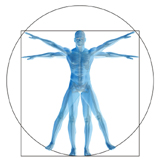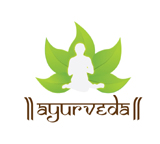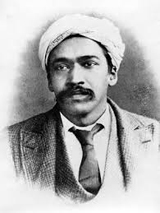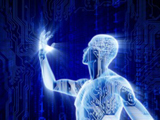Integral Health
The metaphysical basis for Integral Health — will-power and the body
Of all the disciplines of knowledge developed by mankind, the foremost is that which deals with health and well-being. Without the human body nothing tangible can be achieved in this earth of ours. We need to be in a mode of well-being to enjoy life, to enjoy the earth, to be happy and contented. Unfortunately, the forces of discord, dissonance and division need to wreak havoc in the earth and whatever medium they might choose to express themselves, it is in the final analysis, the human body which becomes the battling ground for their action. It was therefore not surprising that Āyurveda, the ancient discipline of health and healing, was intuitively constructed by the great Vedic ṛṣis through revelatory illuminations from the Superconscient, the perennial Wisdom-base. After perhaps more than a millennium of its inception, the reasoning intelligence stabilised itself to a point where evidence-based health practices could develop, paving the way for modern medicine. However, a closer scrutiny reveals that quite a significant number of milestones of modern evidence-based medical research has actually corroborated the great intuitive insights of the ancient ṛṣis. (It is a known fact that the only correct psycho-pharmacological agent to treat schizophrenia till the 1950s was the Āyurvedic drug Sarpagandha, Rawalfia Serpentina).
The discipline of health and healing was developed with much sophistication in Āyurveda. It is now acknowledged that the entire approach to illness in Āyurveda had been psychosomatic since its inception and the oversimplified division of mind and body, so eulogised in the Cartesian dualism was dealt with more effectively without undermining the uniqueness of the mental consciousness. The human being was assessed simultaneously along the somatic and psychological dimensions, subjects that are now dealt with differently by biological and psychological disciplines. The understanding of the etiology and designing of the therapy were both holistic in theory and practice.
Despite the unique strategy of dealing with health and healing from a consciousness perspective, the pursuit of health and well-being was not a part of the programme in the exclusive pursuit of one’s spiritual journey. In the Indian tradition, the knowledge of Āyurveda was developed by the seers for the well-being of the masses, for general uplifting. It was a field of application, a utilisation of intuitive insights for the welfare of humanity at large. But health and well-being were not sine qua non in the pursuit of the experiential realisation of the Absolute. Rather it was at times a great disregard for health and a complete detachment from the concept of well-being that were the characteristics of spiritual and mystic pursuits. The seer concentrated on the Superconscient and this concentration could be impassionedly developed by exclusion of the mundane, by excision of all desires, by forgetting the rest of the world. The pursuit of well-being was also considered to be a desire, though a higher desire compared to the vulgar motives of life, but nevertheless a desire that had to be conquered for identifying with spiritual plenitudes. In the final analysis, the spiritual heritage of India considered the body to be an obstacle, a grossness of Matter reeling under the rule of the Inconscience.
It was Sri Aurobindo who changed the denouement of health and well-being by including the body as an integral part of a veritable Yoga of Perfection. This was absolutely necessary as he was developing the possibilities of evolutionary models that would surpass the present human being. Without a new poise of progressive health and without an open-ended programme of integral well-being that would develop to support the transformation of the body, the vision of higher evolutionary beings could never succeed. However, to shift the denouement, a change of paradigm was needed. Up to the appearance of the human being, it was the change of forms that preceded the change and growth in consciousness. True, it was a secret Superconscient principle that contained the pre-programmed essence of evolution but outwardly the change of form preceded the change of consciousness. As the human being was endowed with a will-power, Sri Aurobindo postulated that a further evolution in consciousness would require a development of the will-power in such a manner that henceforth a change of the inner consciousness would precede the change of the outward form.
In pursuance of his ideal of higher evolutionary beings, Sri Aurobindo started experimenting on himself to develop an indefatigable ‘will’ that would be operative in different ways on different planes of consciousness. He extended this endeavour to a level where ‘will’ and ‘knowledge’ became coeval with each other, synthesised to act as a single entity so that the ‘will’ would be automatically luminous and the ‘knowledge’ spontaneously effective. Sri Aurobindo’s notes, jotted down in the Record of Yoga and the Mother’s vivid descriptions recounted in her logbook, the Agenda, contain important references to how the ‘will’ was developed to be operative on different planes of consciousness, spanning from the level of Matter, albeit, at the level of the cells, to the level of the highest creative consciousness, the Supramental Consciousness.
In this spiralling journey along the evolutionary trajectory, the development of the will-power to act directly on the body and determine shifts in the modalities of health and well-being was an important step. In an early diary note on the 10th of December, 1912, years before he composed his main works, Sri Aurobindo explicitly records that “the important point is that the power of will to change formations in the body has now been physically proved beyond doubt or dispute (1).” Throughout the rest of his spiritual odyssey, he went on developing this theme and expanded it to undreamt of possibilities and it was continued by the Mother in her experiential pursuits that culminated finally in designing a new futuristic body in the subtle physical.
The first thing in the realm of health was development of the body consciousness to the extent that the body could be influenced and dictated directly by the mental will, or the body per se could develop its own will to act independent of the mental will. The body could be so trained that a mental will or suggestion could cure the illness of the body (2). Nearly four decades after his diary entry on the consolidation of will-power to change formations in the body, Sri Aurobindo, in one his last prose writings, wrote exhaustively on how the transformation of the body would be mediated by corporeal changes. As a result, the functioning of the bodily organs would become increasingly supple and flexible so as to resemble “forms of dynamism or plastic transmitters” rather than what we know as gross organs (3). In laying this foundation, Sri Aurobindo laid the metaphysical basis of an integral approach to health, healing and well-being, without which the evolution of the greater being that surpassed the present human species would not be possible.
“The importance of the body is obvious; it is because he has developed or been given a body and brain capable of receiving and serving a progressive mental illumination that man has risen above the animal. Equally, it can only be by developing a body or at least a functioning of the physical instrument capable of receiving and serving a still higher illumination that he will rise above himself and realise, not merely in thought and in his internal being but in life, a perfectly divine manhood. Otherwise either the promise of Life is cancelled, its meaning annulled and earthly being can only realise Sachchidananda by abolishing itself, by shedding from it mind, life and body and returning to the pure Infinite, or else man is not the divine instrument, there is a destined limit to the consciously progressive power which distinguishes him from all other terrestrial existences and as he has replaced them in the front of things, so another must eventually replace him and assume his heritage (4).”
References
1. Sri Aurobindo. Record of Yoga, Part 1. 1st ed. Pondicherry: Sri Aurobindo Ashram Trust; 2001, p. 143.
2. Sri Aurobindo. Birth Centenary Library, Volume 22. Pondicherry: Sri Aurobindo Ashram Trust; 1970, pp. 323-4.
3. Sri Aurobindo. SABCL, Volume 16. 1971, pp. 36-40.
4. Sri Aurobindo. SABCL, Volume 18. 1970, pp. 231-2.
Share with us (Comments, contributions, opinions)
When reproducing this feature, please credit NAMAH, and give the byline. Please send us cuttings.




